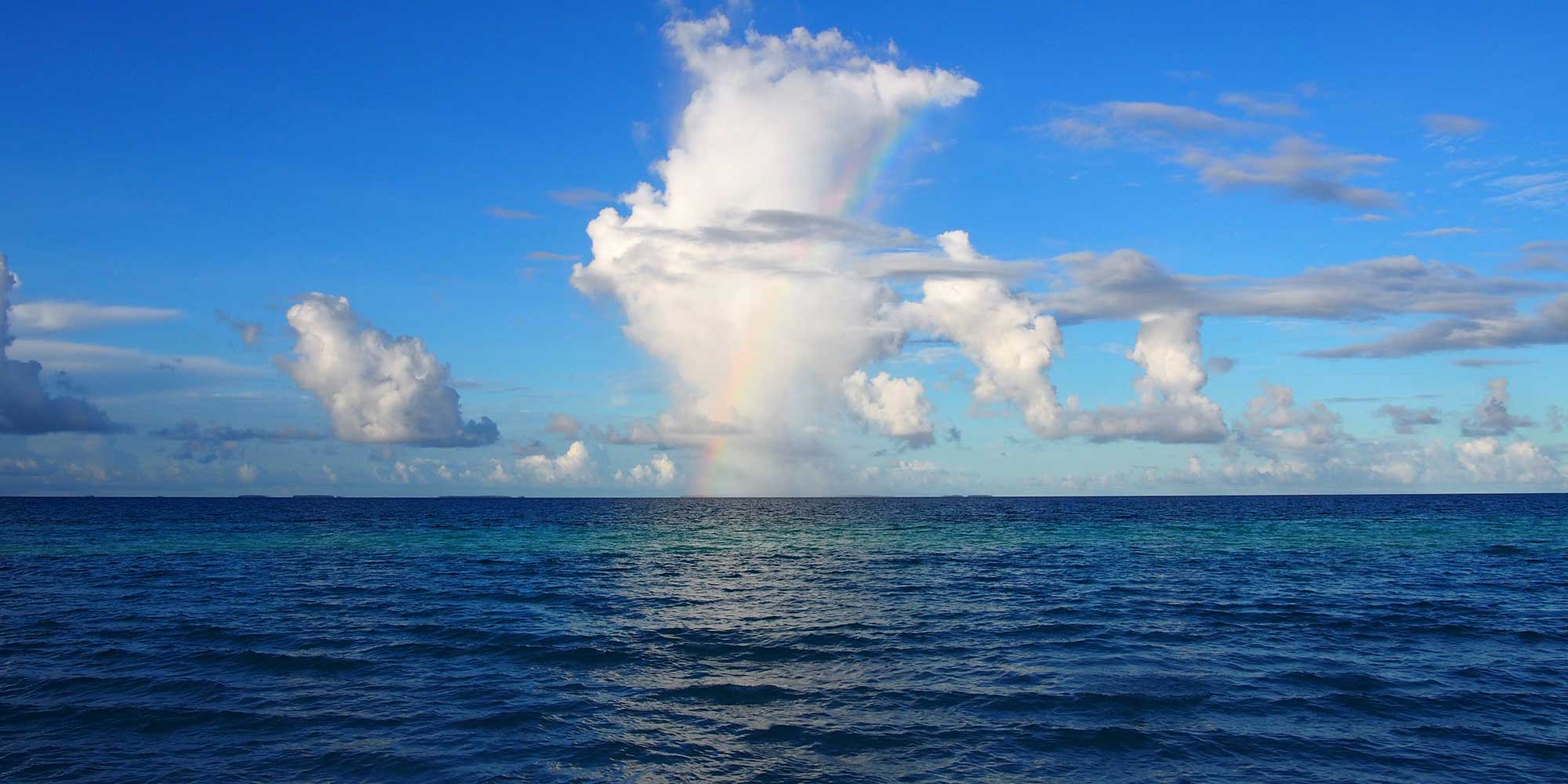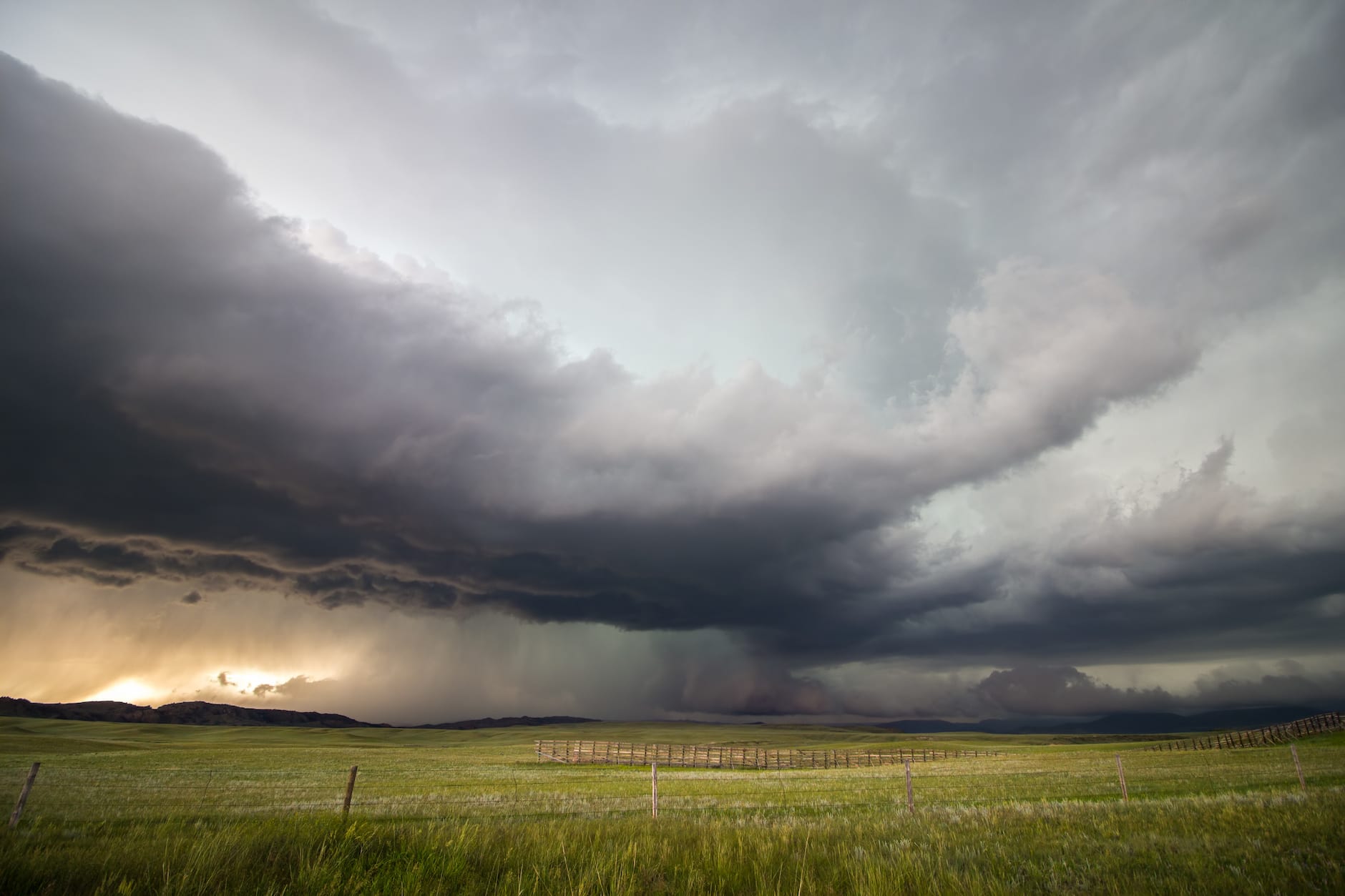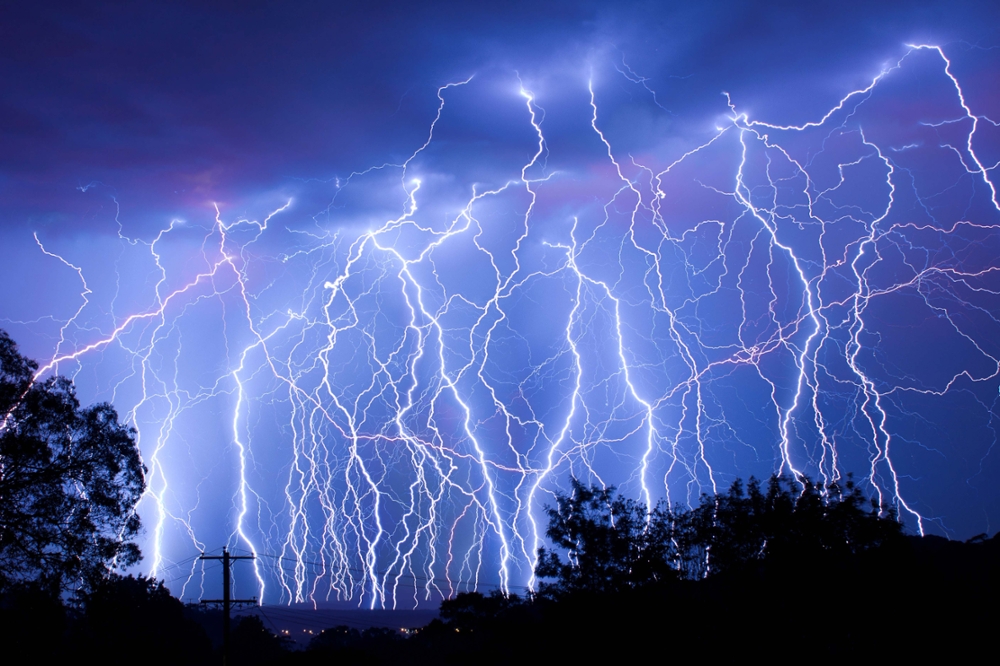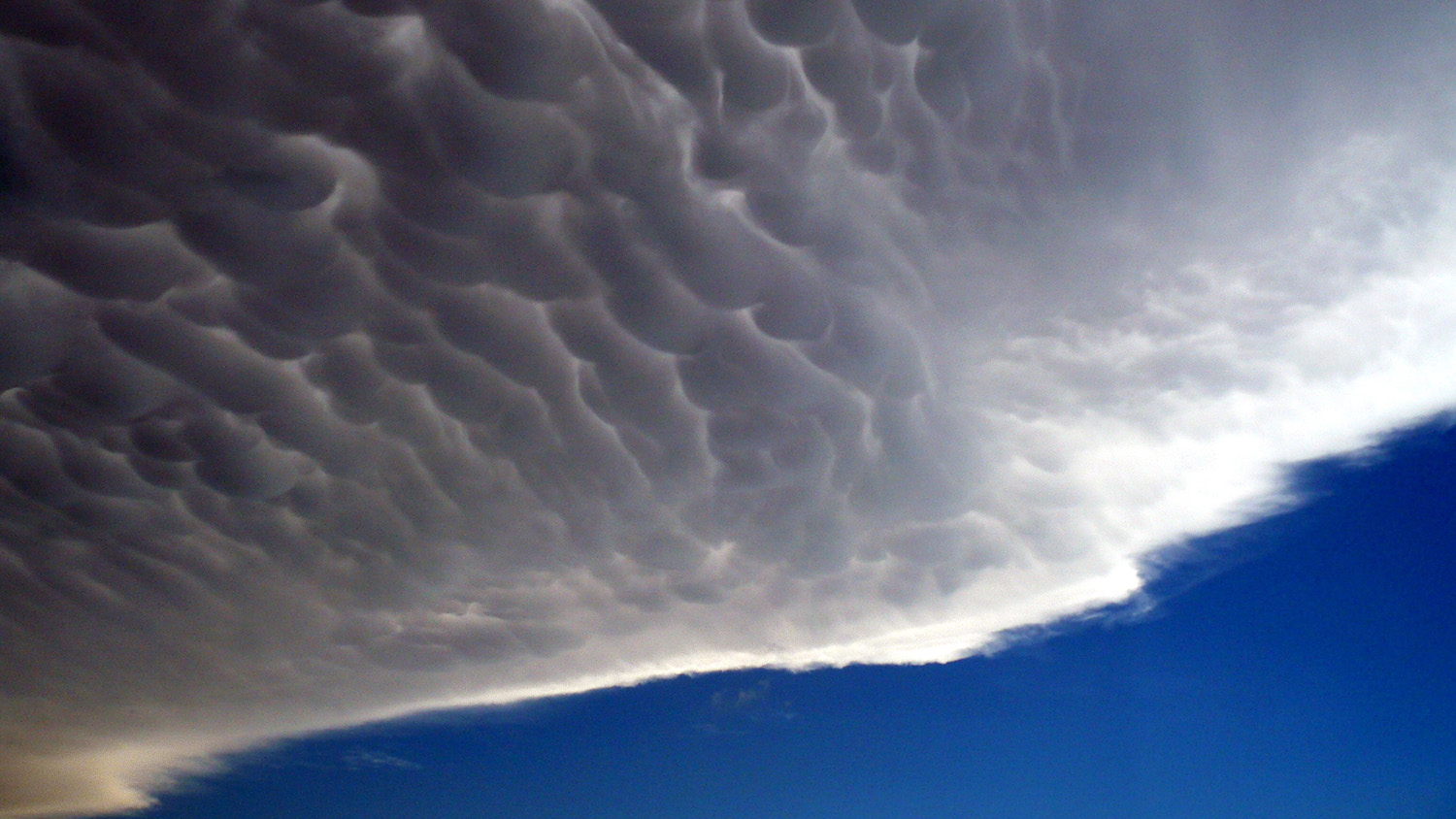Atmospheric Science - What Are The Major Challenges?
In the field of atmospheric science, people study how the atmosphere works and how it is connected to other systems, especially the hydrosphere, cryosphere, lithosphere, biosphere, and space. Because of this, it is a broad field, which makes it hard to describe the most important things. There is also a lot of overlap with other important issues in the earth and environmental sciences.
Author:Paula M. GrahamReviewer:Rhyley CarneyAug 21, 202218 Shares388 Views

In the field of atmospheric science, people study how the atmosphere works and how it is connected to other systems, especially the hydrosphere, cryosphere, lithosphere, biosphere, and space.
Because of this, it is a broad field, which makes it hard to describe the most important things.
There is also a lot of overlap with other important issues in the earth and environmental sciences.
It's important to remember that atmospheric processes and climate processes are different in terms of how long they take.
Climate processes usually take longer than 30 years, but in any case, they take long enough to make meaningful averages.
This is important because there may be a special connection with climate sciences.
Many of the factors and feedback loops that determine how bad climate change is and what effects it might have, as well as how the climate is set up, depend on how the atmosphere works.
What Does Atmospheric Science Mean?
Atmospheric science integrates physics and chemistry to explore the Earth's atmosphere.
Differential equations, vector analysis, and computers are utilized to analyze atmospheric physical and chemical connections.
Meteorology (weather forecasting), climatology (long-term atmospheric patterns and their influences), and aeronomy make up the atmospheric sciences (the study of the physics and chemistry of the upper atmosphere).
Meteorology studies daily and hourly variations in the lower stratosphere and troposphere.
Climatology focuses on longer time spans, from a month to millions of years, and describes the atmosphere's interaction with oceans, lakes, land, and glaciers.
Among the three issue areas, climatology is the best at predicting the first autumn frost.
Aeronomy studies the stratosphere and higher.
This area investigates the role of the atmosphere in electromagnetic communications like shortwave radio transmissions.
The vast scope of atmospheric sciences has created specialists in various subfields.
Dynamical meteorologists study atmospheric flow physics.
Numerical modelers study atmospheric structure and behavior using huge computer models.
Synoptic meteorologists study weather forecasting, while cloud physicists study cloud droplet and ice crystal formation and precipitation processes.
Physical meteorologists research atmospheric optical effects while climatologists analyze climate dynamics and measurements.
Paleoclimatologists study past climates. Boundary layer meteorologists or micrometeorologists study atmospheric structure and behavior in the boundary layer.
Small-Scale Processes In The Atmosphere
Our basic understanding of small-scale processes and their applications faces a number of problems that are being debated and looked into right now.
First, better processing power makes it possible to simulate fluid mechanics problems in a more complete way.
Even flows with stable layers can be described by direct numerical simulation.
Because of these better ways to compute, a new generation of numerical weather prediction (NWP) and climate parameterization schemes is needed.
At high resolutions, you can't ignore urban dynamics, so NWP needs to use certain methods.
The NWP grid sizes are close to the gray zone of turbulence, and the effects of this need to be figured out.
The way clouds and the daily cycle of deep convection are shown can be improved, as can the physical mechanisms that control stable boundary layers, the daily cycle, and sporadic turbulence, especially when the weather is calm.
Interpreting observations at higher resolutions requires new ways of thinking.
In boundary-layer meteorology, the surface energy balance and heat budget must be limited by what is seen in the field.
The data problems in meteorology will also get worse if professional and crowd-sourced observations are available.
Aerosol-Cloud Interactions
Aerosol particles contribute cloud condensation nuclei (CCN) and ice nuclei (IN) to cloud formation.
Changes in aerosol concentrations could affect how long clouds last, how well rain falls, and how much heat the earth gives off.
Knowledge, methods, and techniques have all changed quickly in this area.
Even though we've made progress, it's still hard to say much about the regional and global climate effects of aerosols.
At the molecular and microphysical scales, the interactions between aerosols and clouds are more predictable and fixed.
In this field, we don't know much about both small-scale (molecular and microphysical) and large-scale (regional or global) processes.
We suggest putting together results from different scales to find problems and make tools and methods better.
Scale Interaction In Climate Simulation
Climate is the interaction of spatial and temporal scales.
Lorenz was among the first to emphasize the role of scale interactions in explaining climate differences.
Non-linear scale interactions are difficult to model, causing uncertainty in climate simulations.
Empirical approaches have been proposed to downscale climate model output, but they are problematic, especially when used to assess regional long-term climate projections.
The use of boundary conditions from a global model that predicts coupled interactions among the major subsystems of the climate system (atmosphere, ocean, biosphere, and cryosphere) has a number of problems, such as the retention of large-scale climate errors in the global models, its reliance on lateral boundary conditions, or the lack of two-way interaction between regional and global models.
Small-scale atmospheric processes, usually short-lived events, are very relevant in tropical climates, where mesoscale convective systems interact with large-scale circulations and are crucial in the hydrological cycle.
Depending on their activity and track, tropical cyclones can cause wet or dry years.
This aspect is difficult to mimic in climate models, but its significance to regional climate is undeniable, so it must be better understood before being incorporated.
Extreme Events
In recent years, the effects of meteorological and climate phenomena have gained importance in the eyes of the media and the population as a whole, partly as a result of extreme events such as heatwaves in Europe, Russia, or the USA, or deadly and extremely costly hurricanes that have hit densely populated areas in recent years, including New Orleans and the Metropolitan area of New York.
Prolonged droughts have produced problems for cereal growers in southern Australia, the south-west US, and through forest fires.
Some of these extreme events are related to the North Atlantic Oscillation (NAO) or to blockage and the displacement of storm tracks and the jet stream.
Extremes are unusual in a time series, so there is a compelling need, linked to the analysis of severe occurrences, to extend the climatic series as far as possible.
For this reason, instrumental, historical, and proxy data reconstructions of the past climate remain vital.
The recent Intergovernmental Panel on Climate Change (IPCC) report illustrates that this increased interest in climatic severe events must be addressed in the context of climate change, given that predicted changes in global, regional, and even local climates would be felt through changes in the size and frequency of extreme events.
Climate Influence Of The Sun
About 8% of recent global climate change is linked to solar variability, although this statistic must be viewed with care because many features of solar forcing and the mechanisms connecting solar variability to the earth's climate system remain poorly understood.
In order to boost the accuracy of atmospheric and climate models, it is vital to include a more full representation of solar forcing.
Radiative and particle-driven components drive solar forcing.
Radiative forcing is moving from global to regional reactions caused by solar spectral irradiance (SSI).
Several issues remain about the nature of SSI variations, how they should be handled in models, and how they will evolve in future solar cycles as the sun goes from its current grand maximum to a maunder minimum.
The particle-driven component includes energetic particle precipitation (EPP) and cosmic ray (CR) effects.
EPP affects the upper stratosphere and lower thermosphere.
While the chemical effects of EPP on the atmosphere are well understood, further dynamical consequences, potential mechanisms, and magnitudes in terms of the earth's climate are needed.
The potential influence of EPP on the climate is a new research subject that is gaining prominence as climate models extend to higher altitudes influenced by EPP.
EPP is one of the primary transport channels from the lower thermosphere to the stratosphere and beyond via the polar stratosphere-troposphere connection.
In the near future, EPP could become more evident as solar activity declines and radiative forcing increases.
The CR driven component is the least well understood source of solar forcing, despite continuous international research efforts.
Recent data imply that CRs may increase aerosol nucleation but not globally, and doubts remain about the physical mechanisms involved.
Urban Weather And Climate
The urban heat island (UHI) is possibly the best-known effect of cities on local microclimate; a city's nighttime air temperature can be 10°C or greater than the surrounding area.
Urban climate, a meteorology subfield that emerged 20 years ago, is now mature.
Its main purpose is to use climatic information to improve the construction of cities around the world.
Topics span from fundamental theoretical studies to applied research.
Due to the sizes involved, urban studies have always been interested in micrometeorology.
Since the 1970s, urban climatologists have pioneered instrumentation and process analysis.
This early research led to the construction of the UHI (primarily physical due to its 3D shape and urban fabric).
Measurement of this complicated urban boundary layer remains difficult.
New short-range teledetection tools are used to view physical processes, and this will continue.
When atmospheric models acquired a high enough resolution (a few kilometers), urban climate was considered.
Early 2000s models depicting energy and water exchanges between urban surfaces and the atmosphere are increasingly used in numerical weather forecasting models.
The first international comparisons of urban models explored ways to improve, such as representing urban greenery.
Regional climate models have urban-scale spatial resolutions 15 years behind atmospheric models.
This complicates the portrayal of cities in climate models.
Urban meteorology studies must consider human behavior as well as physics and chemistry.
Although biometeorological research exists, particularly in terms of human comfort, the linkages between the meteorological and social worlds, both in terms of human comfort and meteorologically dependent energy use, continue to be a challenge for urban meteorologists.
Ozone Depletion And Recovery
Many places still have stratospheric ozone minima, but signs of recovery are appearing.
Around the year 2000, halocarbons peaked in the Antarctic stratosphere and began to decline.
Complete recovery is not projected until 2050.
This means that monitoring ozone and ozone-depleting substances to assure recovery is a serious task.
In a changing climate, better process understanding and simulations are crucial.
Both directions must be modeled, i.e., how a changing climate affects the ozone layer and how its recovery affects weather and climate. Climate-chemistry models (CCMs) appear to be crucial.
Remote Sensing For Meteorology And Climate
Ground-based and satellite remote sensing have increased our understanding of weather and climate systems by measuring atmospheric, terrestrial, and ocean processes and their spatio-temporal states.
Satellite imagery and sea level rise are examples.
Extending time series to capture long-term patterns of several climate variables is difficult.
Clouds and precipitation must be remotely sensed for climate monitoring and model output verification.
First, create innovative studies on cloud microphysics, lightning discharge, and atmospheric electricity observation and measurement.
Second, establish novel passive radiometer and radar studies to assist us in understanding cloud and precipitation structure, especially tropical warm rain processes.
To close the atmospheric and continental water cycles, hydrometeorologists must improve observations and simulations (e.g., mountain areas and polar regions).
People Also Ask
What Is The Term For A Student Of Atmospheric Science?
Since that name persisted over the ages, specialists in the atmosphere came to be known as meteorologists.
Every aspect of the weather at a specific location across time. Study of the atmosphere and weather.
Temperature, atmospheric pressure, wind, humidity, precipitation, and cloudiness are all aspects of the atmosphere's condition.
What Does Atmospheric Science Examine?
The study of weather analysis and forecasting, climate and global change, the circulation of the atmosphere in relation to weather systems and their effects on the Earth, air quality, and other atmospheric phenomena that have an impact on us are all included in the field of atmospheric science.
Is Atmospheric Science A Good Major?
Students can find jobs with the National Weather Service, NOAA, NASA, the EPA, the DOD, and the DOE, among many other government and private organizations.
Graduate students can also find jobs at colleges and universities.
Is NASA Hiring Atmospheric Scientists?
The National Weather Service, other parts of the National Oceanic and Atmospheric Administration (NOAA), NASA, the Environmental Protection Agency, the Forest Service, the Department of Defense, and the Department of Energy employ the most civilian atmospheric scientists.
Conclusion
Atmospheric science is a relatively new field that studies the composition, structure, and evolution of the atmosphere, as well as its processes and how those processes interact with other systems.
The list of atmospheric science problems for the next few years above only includes a few of the most important unanswered questions.
It is, of course, not enough to cover all of the possible problems.
In the last few decades, it has become much easier to predict both the weather and the climate.
This is due to improvements in observation techniques as well as improvements in land-based and remote sensing platforms and forecasting methods.
At the same time, as satellite platforms have become more specialized, we have learned more about transitory systems, such as cyclones, in both the tropics and the mid-latitudes.
Jump to
What Does Atmospheric Science Mean?
Small-Scale Processes In The Atmosphere
Aerosol-Cloud Interactions
Scale Interaction In Climate Simulation
Extreme Events
Climate Influence Of The Sun
Urban Weather And Climate
Ozone Depletion And Recovery
Remote Sensing For Meteorology And Climate
People Also Ask
Conclusion

Paula M. Graham
Author

Rhyley Carney
Reviewer
Latest Articles
Popular Articles


